Grants & Fellowships
HDF is passionate about finding and funding the most promising, creative and paradigm-changing research.
![]() “ HDF creates a culture of creativity, excellence, collaboration, and a sense of community and shared purpose which helps to attract generations of scientists to join and stay in the field. Looking back on the decades of my scientific career, it all started with my very first grant from the Foundation.”
“ HDF creates a culture of creativity, excellence, collaboration, and a sense of community and shared purpose which helps to attract generations of scientists to join and stay in the field. Looking back on the decades of my scientific career, it all started with my very first grant from the Foundation.”
X. William Yang, MD, PhD
David Geffen School of Medicine at UCLA
HDF is passionate about finding and funding the most promising, creative and paradigm-changing research.
![]() “ The Huntington’s Disease Foundation creates a culture of creativity, excellence, collaboration, and a sense of community and shared purpose which helps to attract generations of scientists to join and stay in the field. Looking back on the decades of my scientific career, it all started with my very first grant from the Foundation.”
“ The Huntington’s Disease Foundation creates a culture of creativity, excellence, collaboration, and a sense of community and shared purpose which helps to attract generations of scientists to join and stay in the field. Looking back on the decades of my scientific career, it all started with my very first grant from the Foundation.”
X. William Yang, MD, PhD
David Geffen School of Medicine at UCLA
HDF grants enable many researchers to receive major long-term funding from other sources, including the National Institutes of Health. Postdoctoral fellowships are awarded to promising early career researchers and are intended to support and cultivate their interest in Huntington’s disease. The Huntington’s Disease Career Advancement Grant (HD-CAG) is an accelerator program for senior postdoctoral researchers.
The following is a list of currently funded HDF researchers.
Grants

Ranen Aviner, PhD
Project Title: Developing gene therapies for Huntington’s disease that target the synthesis of mutant Huntingtin protein
A type of gene therapy called antisense oligonucleotides (ASOs) has the potential to cure Huntington’s disease. Unfortunately, current ASOs may be associated with major side effects and limited benefit. Dr. Aviner will evaluate a new class of ASOs that could increase effectiveness and decrease side effects of gene therapies for HD. Preliminary work shows that synthesis of Huntingtin protein is regulated by a natural “off switch,” and that similar switches in other genes can be enhanced by therapeutic ASOs. He will use computational modeling and microscopy to design candidate ASOs and test how well they lower mutant Huntingtin protein in cells grown in a dish compared to currently available products.
Ranen Aviner, PhD
Chan Zuckerberg Biohub, San Francisco, CA
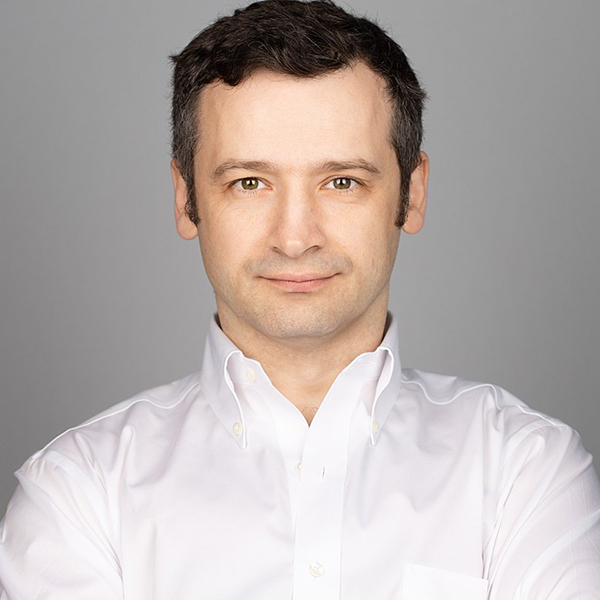
Gabriel Balmus, PhD
Institution: University of Cambridge, United Kingdom
Project Title: Discovery of therapeutic targets that can ameliorate Huntington’s disease
Recent research in Huntington’s disease focuses on how certain proteins interact and influence the disease. A key discovery is the role of a protein that interacts with another involved in DNA repair. Altering a specific part of this protein accelerates disease-related genetic changes, while maintaining it helps stabilize these changes. This interaction impacts the DNA repair process, with low levels of this protein leading to increased repair activity, and higher levels slowing it down. This is supported by patient studies. Additionally, a new interaction was found between this protein and an enzyme that labels proteins with a tag slating them for destruction, suggesting this enzyme might regulate the protein’s stability and, consequently, HD progression. This new understanding could lead to novel approaches in HD treatment.
Gabriel Balmus, PhD
University of Cambridge, United Kingdom
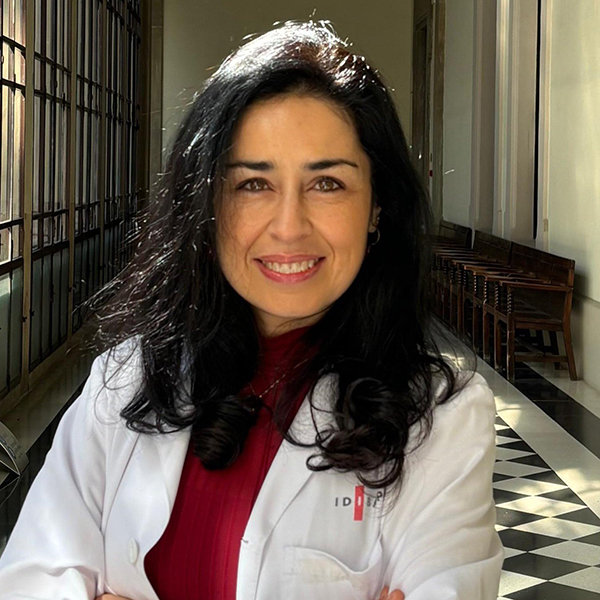
Verónica Inés Brito, PhD
Institution: University of Barcelona, Spain
Project Title: Exploring new therapeutic avenues for Huntington’s disease through RNA editing of mutant huntingtin
In Huntington’s disease, a faulty message from the huntingtin gene creates shorter, toxic versions of the Huntingtin protein. Dr. Brito’s team is studying a small mark called m6A, which controls how cells use genetic instructions. They found m6A is abundant in a specific part of the huntingtin message in mice with the disease. To understand how this mark affects the huntingtin message, they used a unique CRISPR protein, not as scissors but as a guide, to direct another protein like an eraser to remove m6A from the problematic spot. When they tried this in mutated cells in culture, they saw a decrease in the levels of short faulty messages.Dr. Brito now will test if they can slow or stop the disease in mice by using a similar system to erase this chemical mark from the huntingtin messages. Their research could lead to using CRISPR m6A editors as potential treatment in the future.
Verónica Inés Brito, PhD
University of Barcelona, Spain

Jeffrey Carroll, PhD
Institution: University of Washington, Seattle
Project Title: Exploring the Entire Intact Huntingtin Genetic Message in Human Brains
2025 Leslie Gehry Prize for Innovation in Science
The gene that codes for huntingtin is incredibly long. To study the gene in the brain, it would typically need to be cut up into little fragments to fit the specifications of sequencing machines. New technologies and machines are now available that don’t require the gene to be cut up first. In this project, Dr. Carroll will undertake the first-ever examination of the huntingtin gene in Huntington’s disease brain samples using this modern technology. This information will tell us how the entire unfragmented gene is connected and if there are certain parts of the gene that are impaired or are unique to people with HD. Dr. Carroll’s collaborators in the Valdmanis lab performed a similar analysis in Alzheimer’s disease brain samples and made surprising findings about how the genes are organized. Dr. Carroll is excited to apply this same analysis to HD as this information can lead to the design of new drugs for HD.
Jeffrey Carroll, PhD
University of Washington, Seattle

Amit Laxmikant Deshmukh, PhD
Project Title: Disrupting FAN1 and MLH1 interaction to stop Huntington’s disease features
In Huntington’s disease, CAG repeats in the huntingtin gene increase in length over time (known as somatic expansion). This ongoing mutation occurs in the brain and leads to earlier onset and faster progression of the disease. Stopping or reversing these expansion mutations could provide a new approach to treating HD. The proteins FAN1 and MLH1 regulate these mutations: FAN1 helps suppress CAG expansions, while MLH1 promotes it. Dr. Deshmukh’s research has revealed that these proteins can work together, and that disrupting their interaction can stop expansions in brains of mice that model HD. He hypothesizes that disrupting the interaction between FAN1 and MLH1 could help prevent somatic expansion and improve cellular features of HD, like protein clumping and inflammation. The results of this study may indicate whether targeting the FAN1-MLH1 interaction could potentially serve as a safe therapeutic for HD.
Amit Laxmikant Deshmukh, PhD
The Hospital for Sick Children (SickKids), Toronto, Ontario, Canada
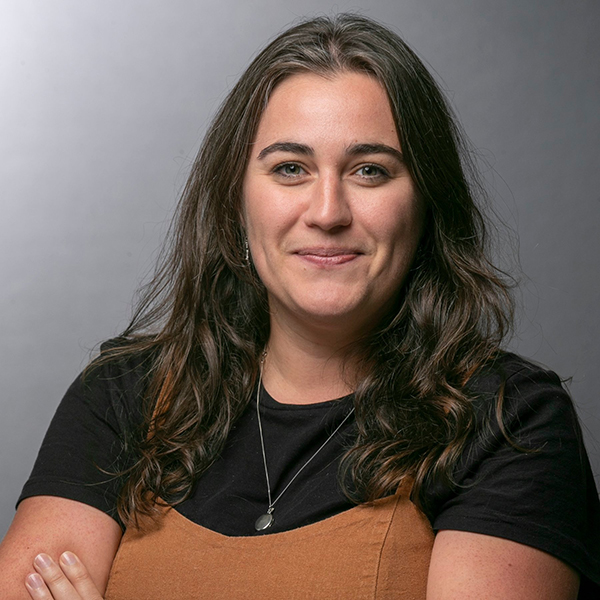
Rachel J. Harding, PhD
Institution: University of Toronto, Ontario, Canada
Project Title: Developing chemical tools to investigate HAP40, the partner of the Huntington’s disease protein
2024 Nancy S. Wexler Young Investigator Prize Recipient
The Huntington’s disease protein, huntingtin, has a partner protein called HAP40. Huntingtin wraps around HAP40, positioning HAP40 like a burger in a huntingtin bun, and making a very stable complex of these two molecules. There is a growing body of evidence that huntingtin bound to HAP40 is an important protein assembly in the cell. The levels of the two proteins track together, they are coevolved, and removing one mirrors the results of removing the other. Dr. Harding with her team have identified and developed tight binding tool molecules which stick specifically to HAP40. She has validated these tools with many different approaches and now seeks to modify them to make degraders – tools that lower levels of a specific protein, in this case HAP40. She will design, make, and characterize these degrader tools with the view to deploy them in different HD model systems to further pinpoint the role of HAP40 in HD biology.
Rachel J. Harding, PhD
University of Toronto, Ontario, Canada
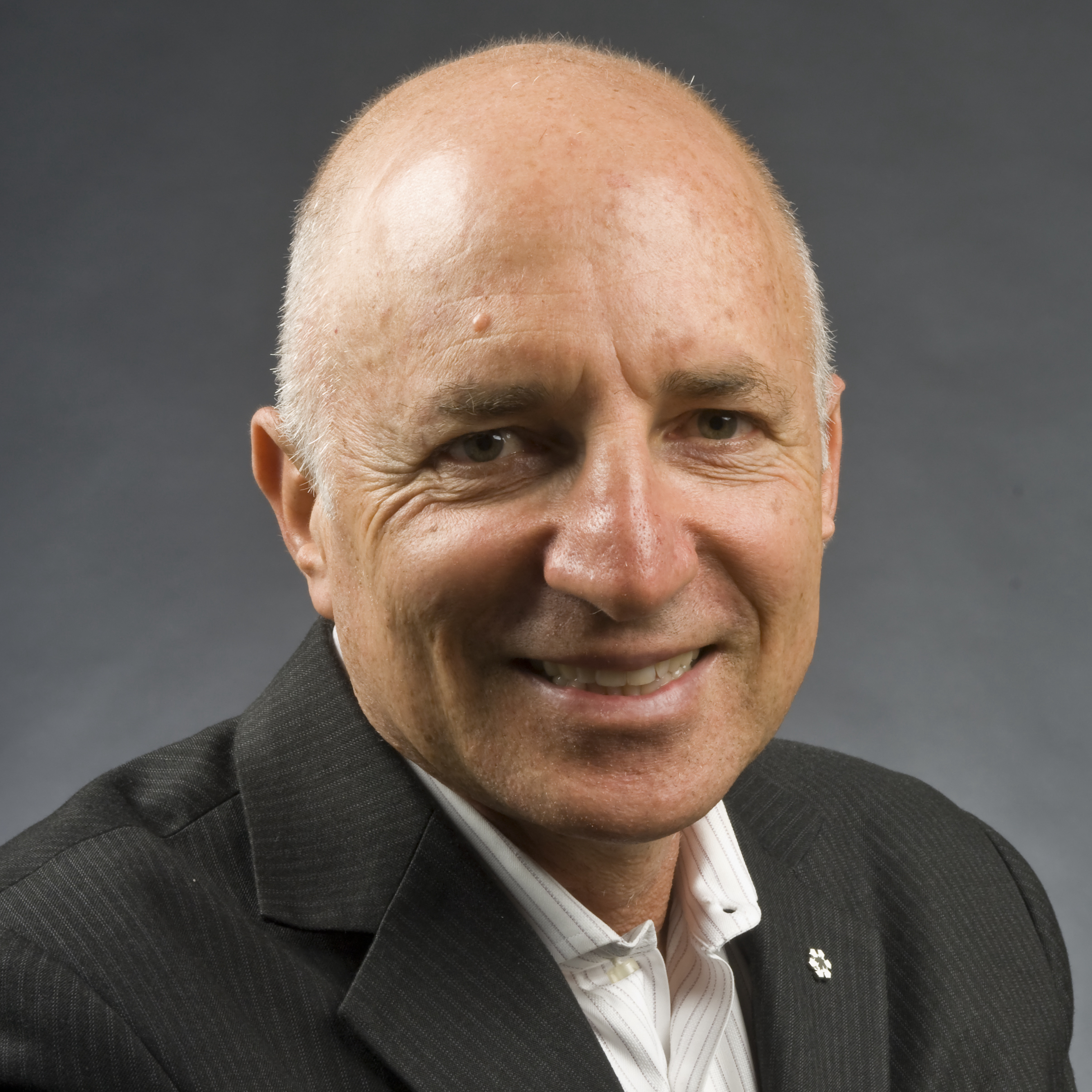
Michael Hayden, PhD, FRCP(C), FRSC
Institution: University of British Columbia, Vancouver, Canada
Project Title: Investigating whether large CAG repeat expansions in the brain cause early onset of Huntington’s disease in patients with DNA sequence changes in the HD gene
In brains of people with Huntington’s disease, the DNA sequence of the CAG repeat expands to become very long in neurons that die earliest in the disease. It was recently shown that small changes in the DNA sequence of the CAG repeat can also affect how early someone develops HD, sometimes by more than a decade. One explanation for how these small changes in the DNA sequence of the CAG repeat cause early onset of HD is that they may increase the number of long expanded CAG repeats in neurons that die earliest in HD, worsening the disease. This proposal will investigate one important DNA sequence change in the CAG repeat in brain tissues from people who develop HD earlier than others. Investigating increased CAG repeat expansion and other potential disease mechanisms in brain tissue from people with HD with this change in the CAG repeat will clarify our understanding of how HD develops and how to develop effective therapies.
Michael Hayden, PhD, FRCP(C), FRSC
University of British Columbia, Vancouver, Canada

David Housman, PhD
Institution: Massachusetts Institute of Technology, Cambridge
Project Title: Reversing the repeat expansion in Huntington’s disease with a DNA repair enzyme therapy
2010 Leslie Gehry Prize for Innovation in Science
The research team is focusing on a therapy for Huntington’s disease by increasing a DNA repair enzyme, known as FAN1, within the brain. This enzyme has the potential to halt the expansion of certain DNA segments that worsen the disease. Using a specially designed virus, Dr. Housman and his team aim to deliver and enhance the enzyme directly in the affected brain cells. By doing so, they hope to prevent or reverse the damage caused by the disease. The effectiveness of this treatment will be tested in mouse models, monitoring improvements in brain structure and function, as well as overall behavior. Through advanced imaging techniques, the researchers will also closely examine changes in the brain’s architecture, ensuring the therapy targets only the problematic cells. This project might pave the way for a new therapeutic approach for patients.
David Housman, PhD
Massachusetts Institute of Technology, Cambridge
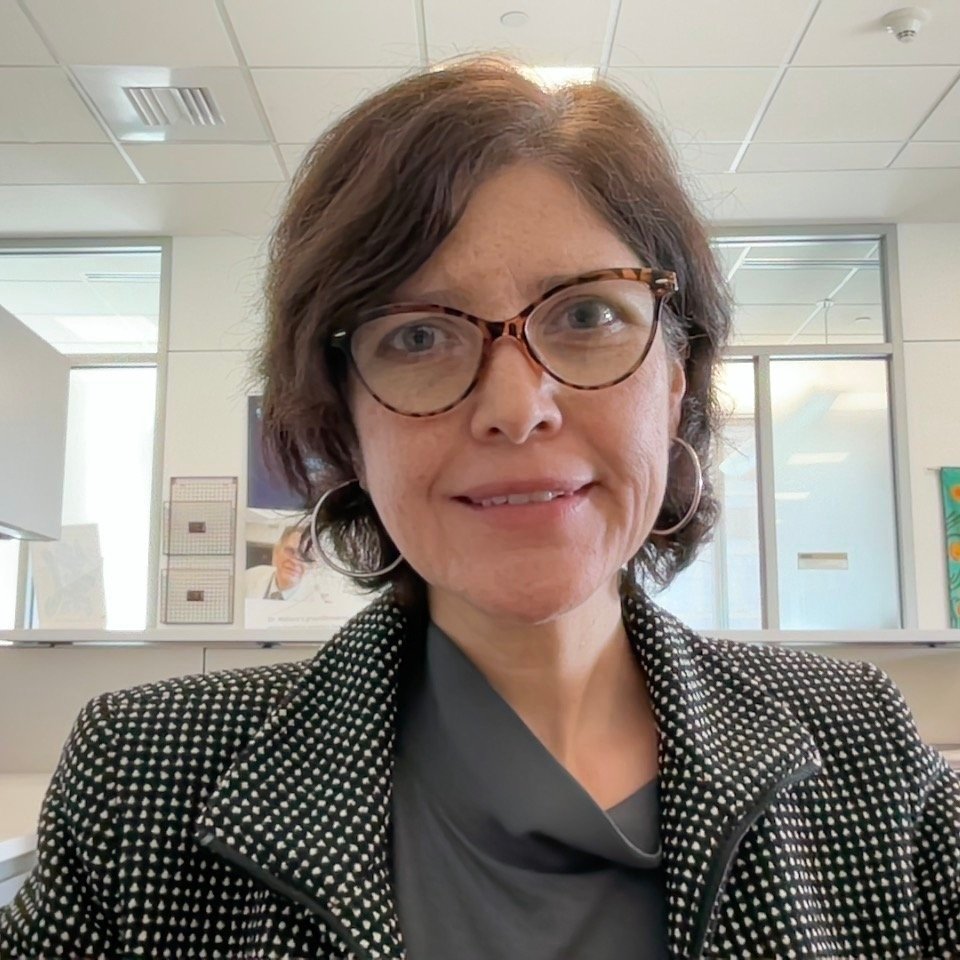
Icnelia Huerta Ocampo, MD, PhD
Institution: The Children’s Hospital of Philadelphia, PA
Project Title: Cell responses to gene therapies
The goal of this project is to advance clinical research on HD. By using technological breakthroughs in her lab, building upon substantial preliminary work, Dr. Huerta Ocampo hopes to establish a solid foundation for advancing novel therapies. In this project, she will be testing the effect and consequences of modalities that will either inhibit repeat expansion or knock down mutant huntingtin in brain cells of mouse models of disease. More specifically, she will use viral particles to modify the expression of genes relevant to HD pathology in two different mouse models. While each of the treatments will target the population of the neurons that are most affected during HD, they will not target every single cell. That is, some cells will get therapy, and some will not. She now has the capabilities to assess how therapy impacts the cells that received the therapy vs. those that did not.
Icnelia Huerta Ocampo, MD, PhD
The Children’s Hospital of Philadelphia, PA

Chris Kay, PhD
Institution: University of British Columbia, Vancouver, Canada
Project Title: Investigating whether large CAG repeat expansions in the brain cause early onset of Huntington’s disease in patients with DNA sequence changes in the HD gene
In brains of people with Huntington’s disease, the DNA sequence of the CAG repeat expands to become very long in neurons that die earliest in the disease. It was recently shown that small changes in the DNA sequence of the CAG repeat can also affect how early someone develops HD, sometimes by more than a decade. One explanation for how these small changes in the DNA sequence of the CAG repeat cause early onset of HD is that they may increase the number of long expanded CAG repeats in neurons that die earliest in HD, worsening the disease. This proposal will investigate one important DNA sequence change in the CAG repeat in brain tissues from people who develop HD earlier than others. Investigating increased CAG repeat expansion and other potential disease mechanisms in brain tissue from people with HD with this change in the CAG repeat will clarify our understanding of how HD develops and how to develop effective therapies.
Chris Kay, PhD
University of British Columbia, Vancouver, Canada
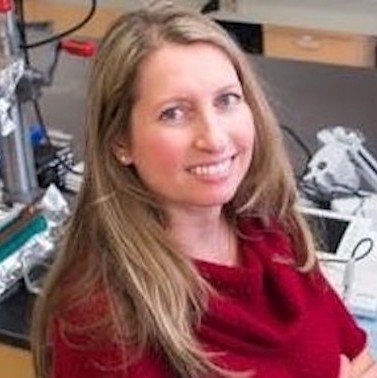
Kimberly Kegel-Gleason, PhD
Project Title: Fat metabolism in Huntington’s disease
Huntington’s disease brains must rely on alternative energy sources besides glucose, like fats. However, metabolism of fats creates a reactive oxygen species which can damage cells. While researchers know that neurons in HD mouse brains accumulate organelles called lipid droplets that stockpile fats, it is not known how neurons metabolize these fats. Defining how HD impacts neuronal fat storage and metabolism could help identify potential therapeutic targets to improve brain cell health. Dr. Kegel-Gleason will use a novel chemical compound capable of tracking which cells use fats to create energy. She will label brain cells in wild-type and knock-in HD Q140 mice to determine which kinds of cells (neurons or glia) consume fats to survive. Finally, she will test the same compound in human neurons derived from stem cells.
Kimberly Kegel-Gleason, PhD
Massachusetts General Hospital, Harvard Medical School, Boston

Seongwon Lee, PhD
Institution: Mercer University, Macon, GA
Project Title: Exploring how TET1 helps protect the brain in Huntington’s disease
Aging brings increased health challenges, notably in the brain, where conditions like Huntington’s disease cause gradual breakdown of brain cells. Drs. Oh and Lee aim to understand the reasons behind this process. Using a unique method, they convert skin cells into brain cells for comparison between younger and older individuals with HD. A molecule called TET1 is linked to cell communication but its impact on HD is unknown. Drs. Oh and Lee aim to explore TET1’s role in HD-induced brain cell damage by reducing TET1 levels in cells from younger individuals with HD. They will also intentionally alter levels of TET1 in cells from younger individuals with HD to measure TET1’s impact on HD cellular features. This research will help to understand why brain cells break down in HD and find new ways to treat it.
Seongwon Lee, PhD
Mercer University, Macon, GA

Tamara Maiuri, PhD
Institution: McMaster University, Hamilton, Ontario, Canada
Project Title: Can We Use DNA Damage Levels in Huntington’s Disease Patient Blood to Guide Clinical Trials?
One of the biggest goals in Huntington’s disease research is to reach a place where we can start treatment before symptom onset. But how can we test if a drug works when we can’t use symptoms as a measurement? One thing known to happen before the onset of symptoms is increased damage to DNA. Dr. Maiuri will determine whether, in asymptomatic individuals carrying the expanded HD gene, increased DNA damage can be detected using small blood samples from a finger prick. DNA damage will first be measured using the gold standard method, called a comet assay. These results will be compared to another method, called Repair-Assisted Damage Detection, which researchers in the Truant lab, where Dr. Maiuri works, have found to be even more sensitive than the comet assay. If successful, this non-invasive testing process can be streamlined so that any company testing a new HD treatment can easily monitor whether their drug is working without the need to wait for symptom onset.
Tamara Maiuri, PhD
McMaster University, Hamilton, Ontario, Canada

Christian Neri, PhD
Project Title: Extracellular vesicles as a source of new-generation biomarkers for Huntington’s disease
Extracellular vesicles (EV) clear out waste within cells and promote communication between cells and organs. They are particularly important for maintaining tissue health. EVs have great therapeutic potential in the fight against neurodegenerative diseases as they can provide targets and biomarkers for early intervention. However, these vesicles differ from each other, making it difficult to know the role of a specific EV in specific neurons. Dr. Neri will use cutting-edge technologies to study the composition and role of small EVs in neuronal networks affected by Huntington’s disease and define their biomarker potential.
Christian Neri, PhD
Sorbonne University, Paris, France

Chris Ng, PhD
Institution: Massachusetts Institute of Technology, Cambridge
Project Title: Reversing the repeat expansion in Huntington’s disease with a DNA repair enzyme therapy
The research team is focusing on a therapy for Huntington’s disease by increasing a DNA repair enzyme, known as FAN1, within the brain. This enzyme has the potential to halt the expansion of certain DNA segments that worsen the disease. Using a specially designed virus, Dr. Housman and his team aim to deliver and enhance the enzyme directly in the affected brain cells. By doing so, they hope to prevent or reverse the damage caused by the disease. The effectiveness of this treatment will be tested in mouse models, monitoring improvements in brain structure and function, as well as overall behavior. Through advanced imaging techniques, the researchers will also closely examine changes in the brain’s architecture, ensuring the therapy targets only the problematic cells. This project might pave the way for a new therapeutic approach for patients.
Chris Ng, PhD
Massachusetts Institute of Technology, Cambridge
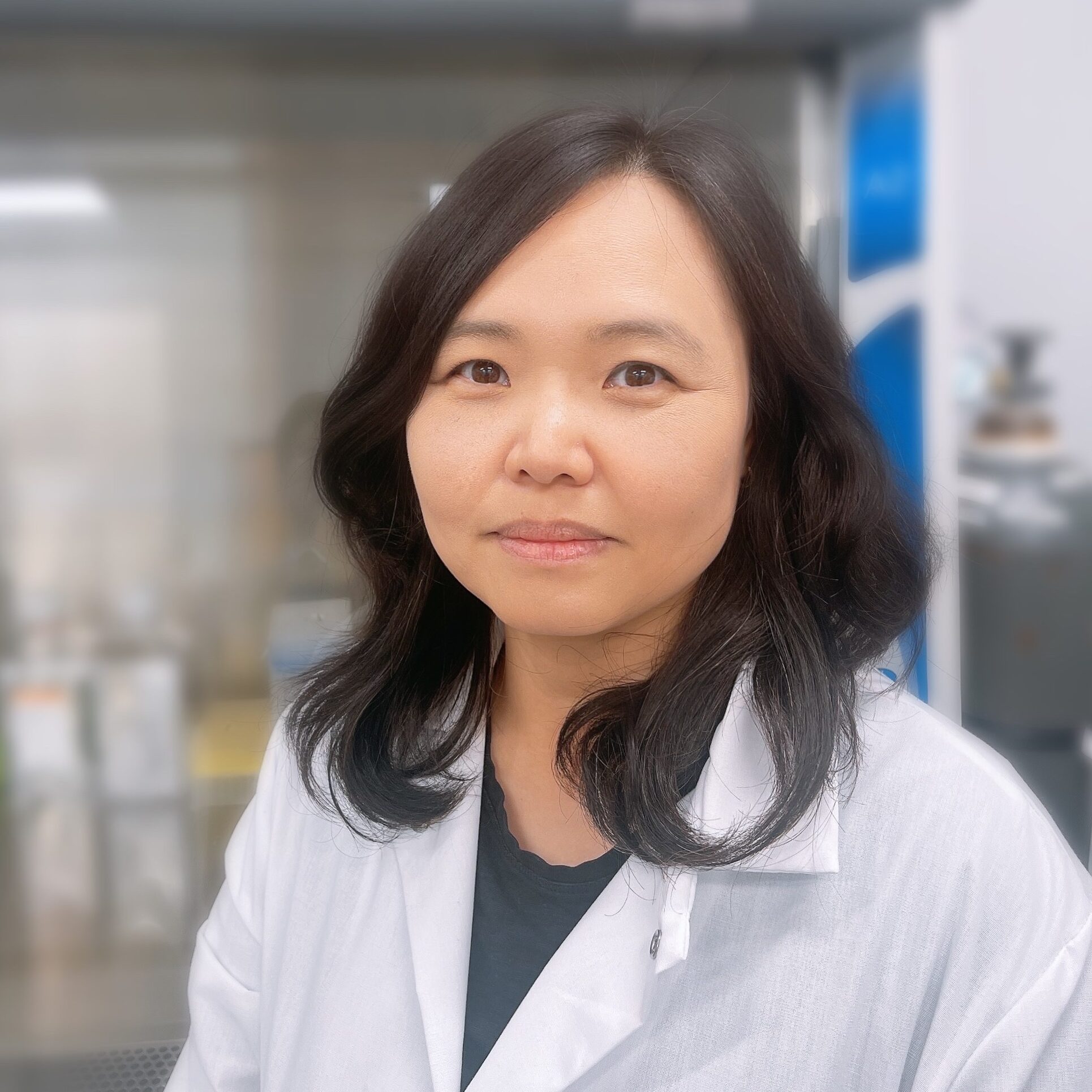
Youngmi Oh, PhD
Institution: Mercer University, Macon, GA
Project Title: Exploring how TET1 helps protect the brain in Huntington’s disease
Aging brings increased health challenges, notably in the brain, where conditions like Huntington’s disease cause gradual breakdown of brain cells. Drs. Oh and Lee aim to understand the reasons behind this process. Using a unique method, they convert skin cells into brain cells for comparison between younger and older individuals with HD. A molecule called TET1 is linked to cell communication but its impact on HD is unknown. Drs. Oh and Lee aim to explore TET1’s role in HD-induced brain cell damage by reducing TET1 levels in cells from younger individuals with HD. They will also intentionally alter levels of TET1 in cells from younger individuals with HD to measure TET1’s impact on HD cellular features. This research will help to understand why brain cells break down in HD and find new ways to treat it.
Youngmi Oh, PhD
Mercer University, Macon, GA
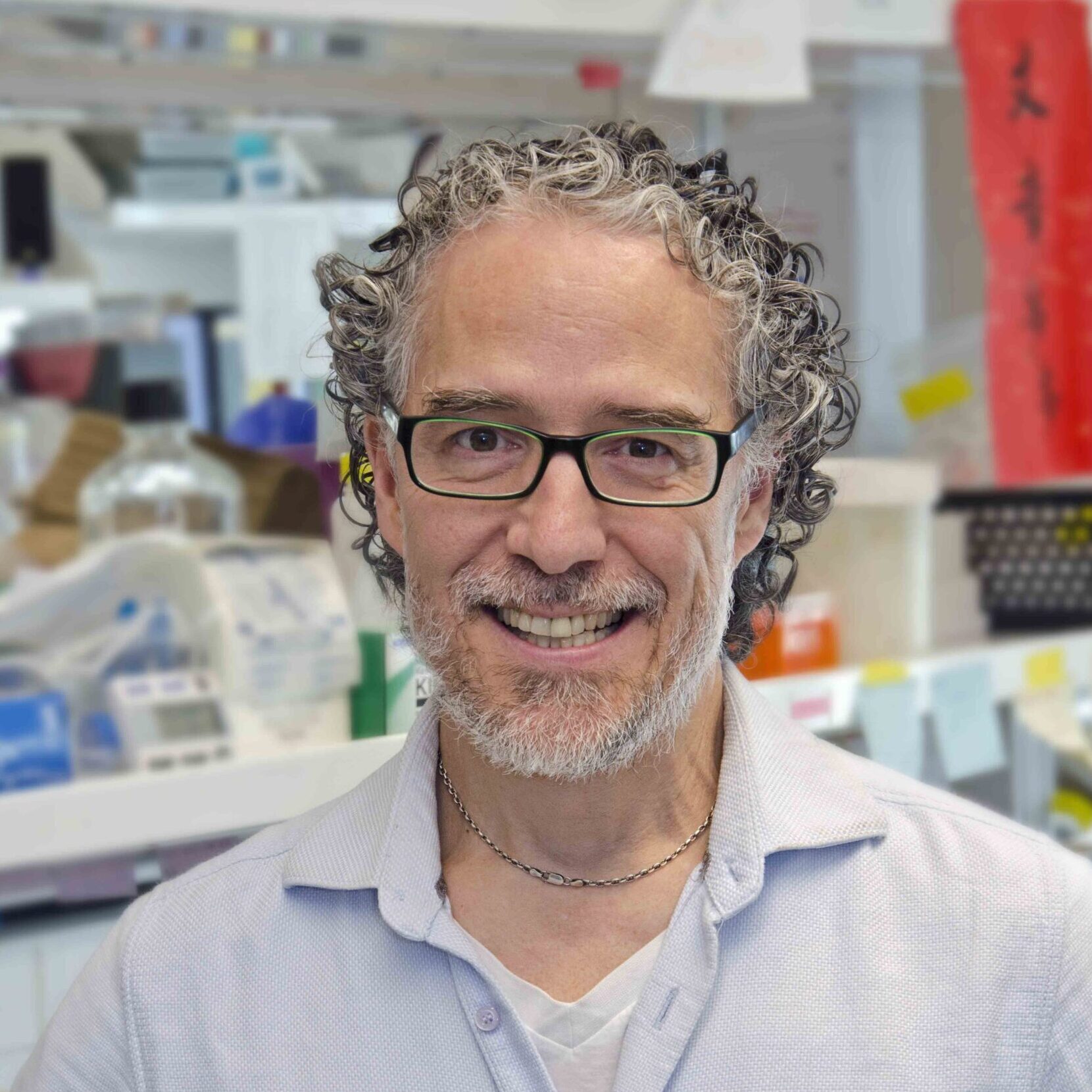
Christopher E. Pearson, PhD
Project Title: Reversing the Huntington’s disease mutation for treatment
If one considers a gene as though it were a sentence such as THE CAT ATE THE FAT FAT RAT, the mutation causing Huntington’s disease is a repeat expansion; THE CAT ATE THE FAT FAT FAT FAT RAT. In affected individuals, this expansion continues to occur in affected brain regions, THE CAT ATE THE FAT FAT FAT FAT FAT FAT FAT FAT FAT FAT RAT. This continues as they age. The rate at which the FAT units accumulate drives the onset and progression of disease. Dr. Pearson’s project focuses on shortening this mutation towards non-expanded lengths to treat affected individuals (essentially putting the RAT on a diet). Being able to reverse this mutation would be a game-changer to rapidly reduce or avoid disease. He will identify molecules that bind only the unusual structures formed by the expanded FAT repeats which will rapidly reverse this expansion in brains of HD mouse models, which will pave the path for treating humans.
Christopher E. Pearson, PhD
The Hospital for Sick Children (SickKids), Toronto, Ontario, Canada

Mahmoud Pouladi, PhD
Project Title: Understanding the role of the MED15 protein in Huntington’s disease
Dr. Pouladi will study a protein called MED15 and its potential role in Huntington’s disease. MED15 has been identified as a possible modifier of HD, meaning it may influence how the disease develops or progresses. However, its effects are not well understood. To investigate this, he created genetically modified mice that carry the HD mutation and have lower levels of MED15. By studying these mice, he aims to determine whether changes in MED15 levels impact key aspects of HD, including brain pathology, neurological functions like movement and learning, gene activity, and other disease-related changes. This research will help improve our understanding of MED15’s role in HD and whether it could be relevant for future studies on the disease.
Mahmoud Pouladi, PhD
University of British Columbia, Vancouver, Canada

Charlene Smith, PhD
Institution: University of California, Irvine
Project Title: Unraveling the impact of enlarged granules in the powerhouse of the cell in Huntington’s disease
In HD, mitochondria, the powerhouse of the cell, do not function appropriately. Dr. Smith and her colleagues previously saw, using a powerful microscope, that there are enlarged granules in HD mitochondria that are made up of RNA, the “transcript” of DNA to make proteins. Dr. Smith proposes to investigate how the enlarged RNA granules affect mitochondrial structure, content and functions, including energy production, handling excess calcium and toxic molecules called reactive oxygen species, and how these granules affect removal and clearance of the mitochondria. She also aims to discover what causes the granules to become larger in HD, and whether import of proteins into the mitochondria is disrupted, causing the granules to become enlarged. The proposed work will use patient stem cell derived models, targeting the area most affected in HD, the striatum, making neurons in 2D and in 3D.
Charlene Smith, PhD
University of California, Irvine
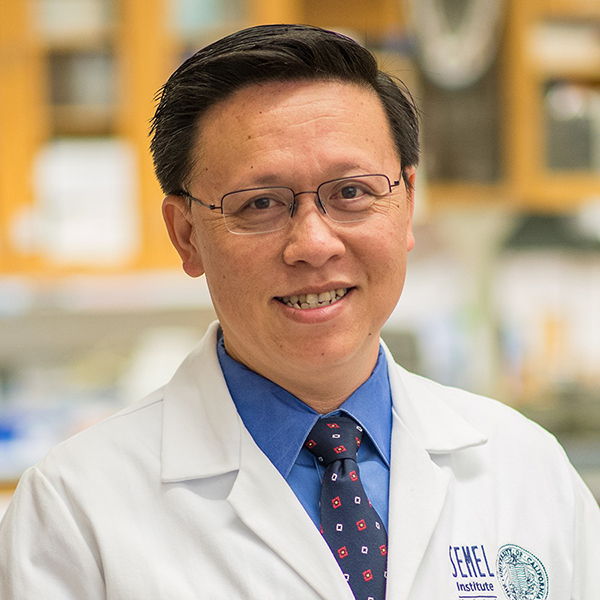
X. William Yang, MD, PhD
Institution: Semel Institute and David Geffen School of Medicine, University of California at Los Angeles
Project Title: Probing Huntingtin Binding Protein HAP40 in Cortical Biology and Pathology in Huntington’s Disease
2014 Leslie Gehry Prize for Innovation in Science
Huntingtin is a large protein that binds to many other proteins. Since Huntington’s disease is caused by the mutated form of Huntingtin, changes in the way the mutant protein interacts with its partners may help explain why certain brain cells are particularly vulnerable in HD while others are spared, and where we could target to prevent or treat HD. HAP40 is a protein that binds to the Huntingtin protein in a one-to-one manner (akin to its best friend) in a cell. Preliminary study from Dr. Yang’s lab found that mutant mice without HAP40 during brain development show remarkable degeneration of brain cells called neurons in the cortex, a brain region critical for cognition, emotion, and motor control. He will now study the normal role of HAP40 in the development of the cortex, and test whether boosting HAP40 levels could reduce symptoms in a mouse model of HD.
X. William Yang, MD, PhD
Semel Institute and David Geffen School of Medicine, University of California at Los Angeles
Postdoctoral Fellowships

Swati Balakrishnan, PhD
Institution: University of Toronto, Ontario, Canada
Project Title: Investigating the role of a protein variant in damage to genetic material
The huntingtin gene contains repeating ‘CAG’ DNA letters. Too many CAG repeats causes Huntington’s disease, and as certain cells age they can erroneously add more repeats to the gene. This type of mutation is usually fixed by many molecular machines called DNA repair proteins. One of these proteins is RPA, which binds DNA and signals other repair machines to find and correct damage. RPA has another version called Alt-RPA, which works against RPA. Alt-RPA is seen at high levels in HD brains compared to healthy ones and contributes to expansion of CAG repeats, but little is known about how it works or how to block its action. Dr. Balakrishnan aims to visualize Alt-RPA using cutting-edge microscopes, discover the kind of DNA it interacts with and design molecules to prevent Alt-RPA from working. Her study will determine the function of this crucial DNA repair protein and help discover HD therapies.
Swati Balakrishnan, PhD
University of Toronto, Ontario, Canada
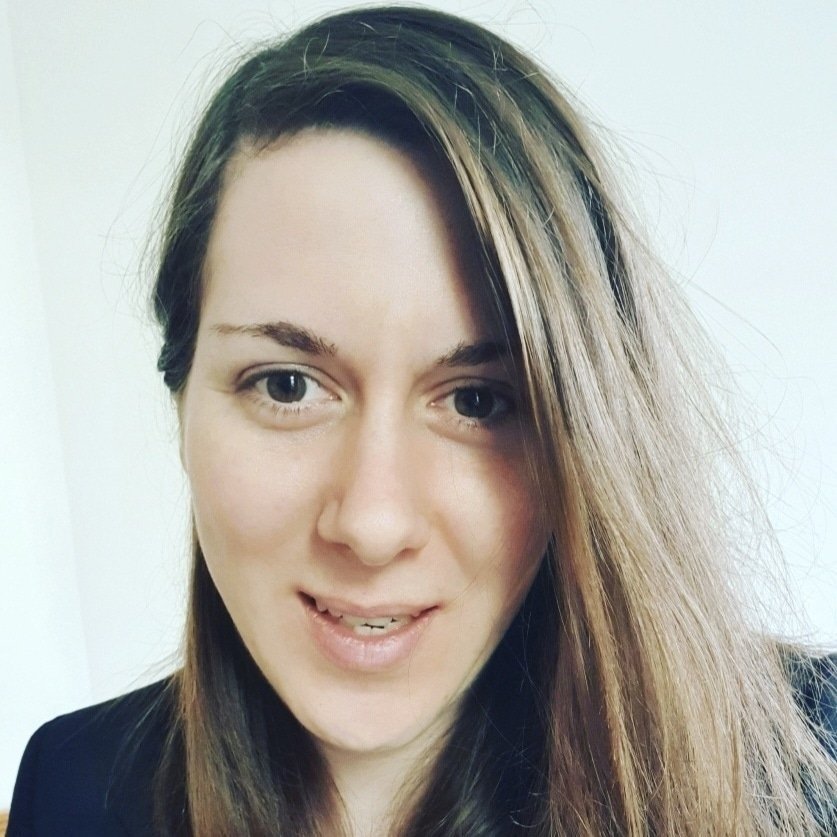
Ivana Vujkovic Bukvin, PhD
Mentor: Judith Frydman, PhD
Institution: Stanford University, CA
Project Title: Mapping the shape of pathogenic huntingtin during its synthesis on the ribosome
Dr. Bukvin wants to study a protein called huntingtin, which is made inside our cells on a machine called a ribosome. This protein is important because changes in its shape might lead to Huntington’s disease. She and her team in the Frydman laboratory are curious if the shape of huntingtin changes while it is being made by the ribosome and if this change affects how it works and interacts with other proteins in our cells. They are also interested in seeing how huntingtin interacts with chaperone proteins, which help proteins acquire their correct shape in cells. To do this, Dr. Bukvin will use different colored dyes to mark huntingtin proteins while they are being made by the ribosome. The color footprints will help her describe the different huntingtin proteins shapes the ribosome creates in great detail and identify if any of these shapes are harmful to cells.
Ivana Vujkovic Bukvin, PhD
Stanford University, CA

Vanessa H. Casha, PhD
Institution: University of California, Los Angeles
Project Title: Uncovering new therapies for Huntington’s disease by examining subcompartments in brain cells
2025 Nancy S. Wexler Young Investigator Prize Recipient
Huntington’s disease is caused by mutations that produce mutant Huntingtin (mHTT) protein, but how and why this mHTT has such a devastating effect on the brain is still not fully understood. Dr. Casha seeks to pin this down by zeroing in on the brain cells that are most affected in HD: striatal astrocytes and neurons. She hypothesizes that on and within the surface of these cells, and within their nuclei, key proteins exist that are the molecular mediators of the disease. By using novel methods developed in the Khakh lab, Dr. Casha aims to identify such proteins to create a map of which proteins are affected within specific subcompartments of the cells. This map can help us better understand the specific proteins responsible for dysfunction and recovery in HD and, importantly, this information can be used to develop and test new therapies.
Vanessa H. Casha, PhD
University of California, Los Angeles

Katherine Croce, PhD
Mentor: Ai Yamamoto, PhD
Institution: Columbia University Medical Center, New York
Project Title: Clearing Aggregates to Treat Huntington’s Disease
To maintain their health and function, cells are continuously recycling debris and structures that are no longer needed. In neurodegenerative disorders such as Huntington’s disease, this process is slowed because the disease-causing mutation results in the creation of more debris than the cell can normally handle. Previous work by Dr. Croce in the Yamamoto lab identified a way to help cells overcome this problem by increasing levels of a protein known as Alfy. Dr. Croce has devised a new way to increase Alfy levels that has the potential of being used as a therapeutic. This approach will be tested in mice that model HD to determine if this new strategy can be used to either slow or reverse the disease in mice that are already showing symptoms.
Katherine Croce, PhD
Columbia University Medical Center, New York
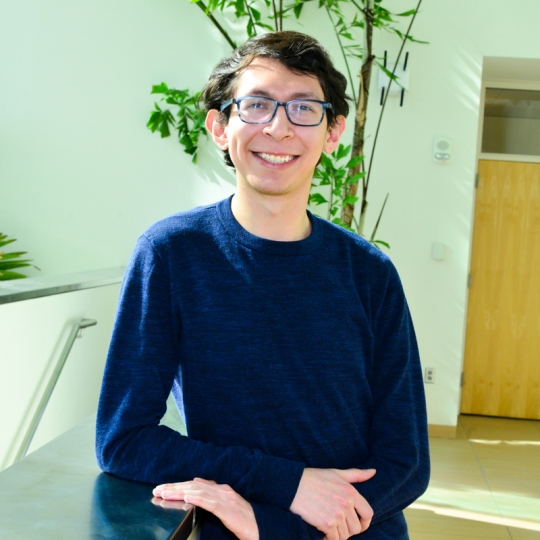
Francisco Garcia, PhD
Institution: Massachusetts Institute of Technology, Cambridge
Project Title: Viruses targeting blood vessels in the brain as a therapeutic strategy for Huntington’s disease
In the brain, blood vessels are not only important for shuttling all essential nutrients for normal function but also create a protective barrier. In Huntington’s disease, brain blood vessels are “leaky” and can accelerate the disease process. Dr. Garcia’s work will focus on targeting the blood vessels themselves to correct their disease pathology. By using specialized viruses that can selectively enter the cells of these blood vessels, he will be able to specifically determine if repairing the blood vessels in the brain is a viable therapeutic approach. To do so, he will utilize mouse models of HD and perform a variety of experiments to assess therapeutic benefit. In doing so, he will not only assess the feasibility of targeting blood vessels in the brain but also understand the biological processes that this enables.
Francisco Garcia, PhD
Massachusetts Institute of Technology, Cambridge

Joseph Hamilton, PhD
Institution: University College London (UCL) Institute of Neurology, United Kingdom
Project Title: Exploring the Role of the PMS1 Gene in Huntington’s Disease
Small genetic variations in a gene called PMS1 determine the age when someone with the gene for Huntington’s disease begins showing movement issues, but we do not know why this occurs. PMS1 may cause additional CAG repeat expansion within the huntingtin gene, leading to a more toxic Huntingtin protein. In this project, Dr. Hamilton will measure CAG repeats in cells derived from people with HD after reducing PMS1 levels to establish whether PMS1 is involved. Dr. Hamilton will also assess PMS1 to identify specific regions of the gene that are required for this CAG expansion to take place. Through a collaboration with Rgenta Therapeutics, cells will also be treated with drugs known to reduce levels of PMS1, which could be the first step in providing patients with a novel disease-modifying treatment.
Joseph Hamilton, PhD
University College London (UCL) Institute of Neurology, United Kingdom

Ryan Hildebrandt, PhD
Mentor: Eric T. Wang, PhD
Institution: University of Florida, Gainesville
Project Title: Investigating Neuron Transport Issues in Huntington’s Disease
One function of the Huntingtin protein is transporting material around highly complex cells in the brain, called neurons. This process is important for neuronal survival due to impacts in the nucleus, the central area of the cell where genetic material is housed, and the distant branches of neurons far away from the nucleus, which are critical for cell-to-cell communication. In Huntington’s disease, the ability to transport cellular components between these locations appears to be affected both by decreased amounts of normal Huntingtin protein and increased amounts of mutated Huntingtin protein. However, we do not fully understand which contributes more to altered cellular transport, nor do we know all genes that are affected by transport deficits in Huntington’s disease. Dr. Hildebrandt aims to create systems to track the production of gene products in the nucleus and transport of these products to the outer branches of neurons. By reducing levels of normal or mutated huntingtin protein, he will determine which has a larger impact on transport and function. Greater knowledge on this process could aid in the design of future therapies.
Ryan Hildebrandt, PhD
University of Florida, Gainesville

Srivathsa Magadi, PhD
Mentor: Walker Jackson, PhD
Institution: Linköping University, Sweden
Project Title: Modulate immune cells of the brain to alleviate Huntington’s disease
Microglia, the immune cells of the brain, have both neuroprotective and neurotoxic potential. A fine balance between these opposing capacities is disrupted in brain diseases. Dr. Magadi and colleagues found that the brains of people with Huntington’s disease produce a specific form of a ribosomal protein, Rps24, which the brains of individuals without Huntington’s do not. They hypothesize that this form of the protein is used by microglia to help the brain fight the disease. To test this hypothesis, Dr. Magadi will use cells in a dish to understand the molecular purpose of this version of the Rps24 protein. He will also use genetically engineered mouse models that enable researchers to control the production of the potentially beneficial version of Rps24 in the brain. If this form of the Rps24 protein can alter the course of the disease in mouse models, such findings can potentially be used to tailor drugs that will elicit similar effects in humans.
Srivathsa Magadi, PhD
Linköping University, Sweden

Christian Makhoul, PhD
Mentor: Danny Hatters, PhD
Institution: University of Melbourne, Australia
Project Title: Stuck in a loop: how mutant huntingtin could be exacerbating its own mutation
The aim of this research project is to uncover cell processes that have become compromised in the context of Huntington’s disease. Proteins make up a core component of the cell composition and interact with each other to tightly regulate processes that are crucial for cell and organ health. In Huntington’s disease, specialized regions of the brain are dramatically affected due to a mutation of a single gene that encodes the huntingtin protein. Using specialized techniques that monitor how protein interactions are changed, it was uncovered that huntingtin may be interacting with other cell proteins to exacerbate its own mutation. This is an exciting discovery that has not been previously documented. This project aims to further explore the details of this interaction to understand how it can be regulated to mitigate disease.
Christian Makhoul, PhD
University of Melbourne, Australia
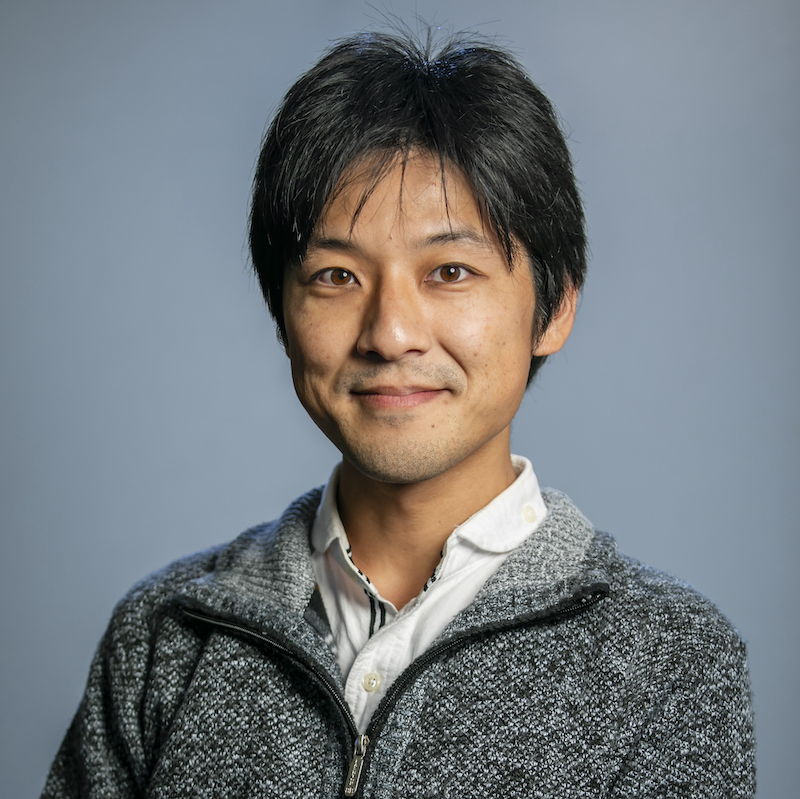
Shota Shibata, MD, PhD
Institution: Massachusetts General Hospital, Harvard Medical School, Boston
Project Title: Developing a novel approach to monitoring Huntington’s disease progression
Huntington’s disease is caused by unstable CAG repeats, which expand in some cells over time. These changes, called somatic instability (SI), affect how the disease progresses. Measuring SI is difficult because current methods are biased and require invasive brain tissue samples. Dr. Shibata is working to develop a new, precise way to measure SI using advanced DNA labeling and sequencing methods. To make testing easier, he will focus on collecting non-invasive samples from sources like cells in the nose or blood. By comparing these samples, he aims to create a reliable method to measure SI without invasive procedures. The goal is to use SI as a marker for tracking HD progression and testing new treatments. This research could improve care for HD patients and others with similar genetic conditions, helping us find better treatments and move closer to a cure.
Shota Shibata, MD, PhD
Massachusetts General Hospital, Harvard Medical School, Boston
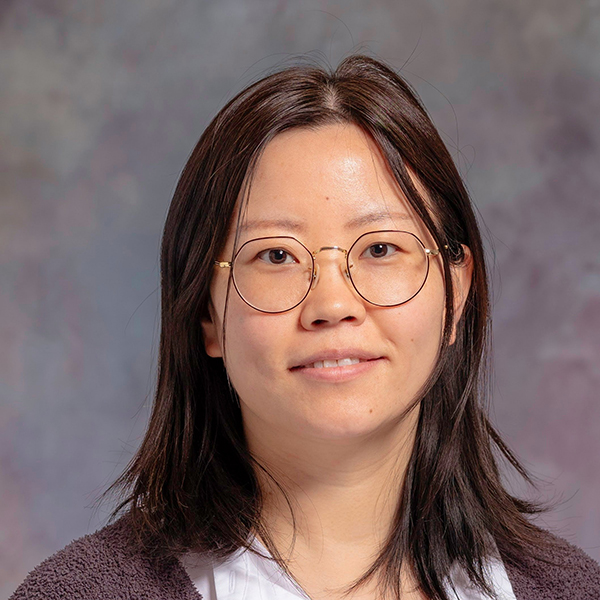
Xiaojing Sui, PhD
Mentor: Richard Morimoto, PhD
Institution: Northwestern University, Evanston, IL
Project Title: Watching how protein clearance becomes faulty with aging in Huntington’s disease
The health and function of our cells rely on the recycling machine, known as the proteasome, to clean up old and damaged proteins. However, with Huntington’s disease, the proteasome cannot do its job properly and it gets worse as patients get older. Dr. Sui aims to understand exactly how this happens. She has developed a high-throughput and very sensitive approach, which allows her to watch how the proteasome changes its shape in HD in unprecedented detail. Using this method in worms that model HD, she has found that the proteasome is getting jammed up with too much garbage to clean when animals get old. She is now studying how the HD mutation makes the proteasome slow down even more at the molecular level. This helps her understand why HD gets worse over time. And if she can figure out how to fix this problem with the proteasome, it might lead to new treatments for HD.
Xiaojing Sui, PhD
Northwestern University, Evanston, IL

Takeshi Uenaka, MD, PhD
Institution: Stanford University School of Medicine, CA
Project Title: Understanding how the brain’s immune cells can reduce huntingtin clumping within neurons in human stem cell models
In neurodegenerative diseases, including Huntington’s disease, abnormal proteins build up in the brain, forming clumps that cause harm. Some scientists believe that stopping this protein buildup could help treat these diseases. Interestingly, microglia, the brain’s immune cells, may play a role in controlling these protein clumps. Dr. Uenaka’s research has shown that microglia can remove harmful protein buildup from within brain cells. He now aims to explore how microglia manage protein accumulation in other cells, with the goal of finding new ways to slow or stop the progression of these diseases.
Takeshi Uenaka, MD, PhD
Stanford University School of Medicine, CA
Huntington’s Disease Career Advancement Grants (HD-CAG)

Chris Kay, PhD
Mentor: Michael Hayden, PhD, FRCP(C), FRSC
University of British Columbia, Vancouver, Canada

Devon Pendlebury, PhD
Mentor: Leslie M. Thompson, PhD
University of California, Irvine

Piere Rodriguez-Aliaga, PhD
Mentor: Judith Frydman, PhD
Stanford University, Palo Alto, CA

Sonia Vazquez-Sanchez, PhD
Mentor: Don Cleveland, PhD
Institution: University of California at San Diego

Shota Shibata, MD, PhD
Mentor: Ricardo Mouro Pinto, PhD
Massachusetts General Hospital
Harvard Medical School, Boston

